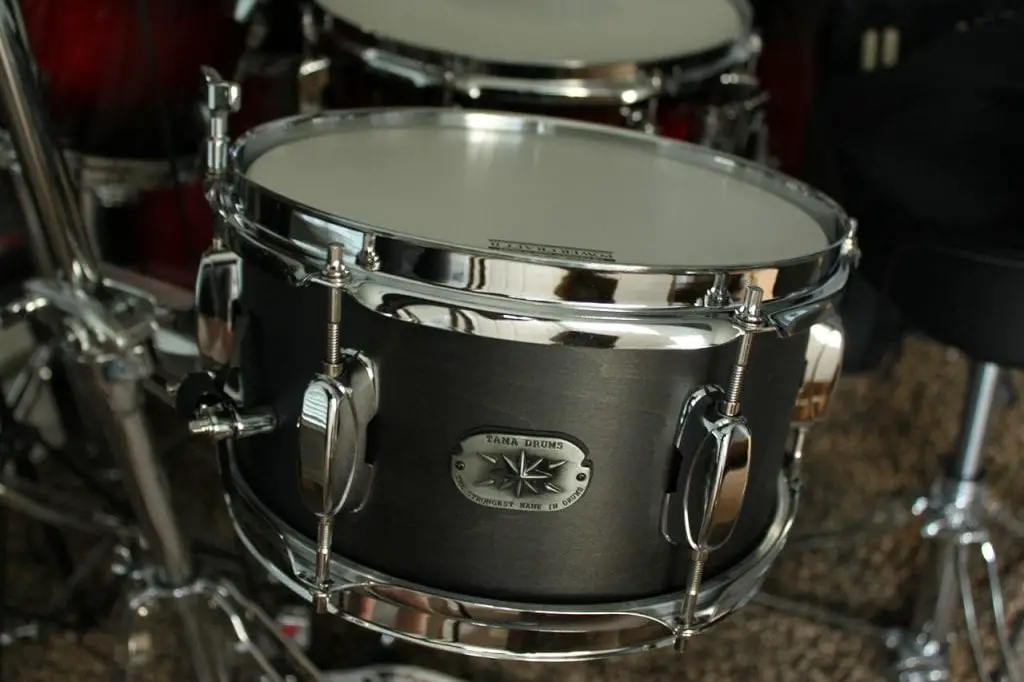All the drummers would understand the nightmare winters are for your drum sets. Drums are already a high maintenance instrument to own and winters are the most difficult part of the journey. There is a thumb rule among drummers that when the environment is not conducive for you, it is not conducive for your drum sets. As drum sets consists of ply wood, metal, plastic skin, animal skin and other smaller little components. They are mostly made with metal, leather and alloys, so the probability of rust, dampness and delamination of plies is an ever bearing danger. Therefore, winter require special efforts for any experienced or new drummer. The preparation of storing your drum in neutral environment begins way before the winter sets in. In this article we will discuss the different ways we can keep our drums protected during the winter and avoid any damage.
Caring For Your Drum and Drum Sets
Drums generally need a special care to keep them in good shape and avoid any misfortune in the wrong time. They are a labor-intensive piece of equipment which require time and effort to set up. On the other hand, the presence of a drum kit on stage is a mighty presence in the league of its own. There are various available guides that come with most drum sets. The guides inform the drummers as to how to go about, cleaning, fixing and maintaining their drum sets. Let us look at some basic maintenance aspects of a drum kit which are universally applicable.
1) Keep Your Kit Covered
For every drummer out there, it is very important to keep their drums covered when not in use. It is imperative for a drum kit to have a clean look. There are a number of drum cover available in the market with a variety of finishes. They range from leather covered, lacquers, wrap or stain proof styles. If you do not have a drum cover, remember to keep your drum sets dusted against any layer of dirt and dust. But the best bet would be to keep them covered. If the drummers do not own a special drum cover, using a bed sheet or piece of cloth big enough would suffice as well.
For those who keep their drums inside a club, grease from food oil in the air can create a layer of greasy layer which is difficult to remove. Also smoke particles can settle on to your drum skin. Therefore, always cover your kit.
2) Wipe your Drum Kit
Regular wiping of drum sets are important to keep them clean. Wiping down your drum set with a piece of clean cloth sprayed with grease removing agent can help keep them clean and looking brand new. It is important to dismantle the drum kit before wiping to ensure a thorough wipe. There are specific products available to clean the drum shells, the most crucial part of the drum kit. These products are made using special polymer which keep the drum shells clean and avoid any fungal buildup.
3) Avoid Scratching Up The Surface
It is important to note that while cleaning the surfaces of drum kits, never scratch of the polished surface. In most cases the drum surfaces are made up of layers of lacquer. So be always gentle when polishing the lacquer layers. When doing oil surface cleaning, it is recommended to clean the surface of the wood as the oil is good for wood health. Use a high quality oil finish polish to clean the drum surface. Never use hard and rough material to clean the drum surfaces. Towel, soft clothes are ideal for your drum kit.
4) Keep The Drum Load Bearing Edges Lubricated
The drum load bearings should be examined on a regular basis. They should be lubricated, so they are easy to set your drum head and helps in quick tuning. You can either use special bearing edge liquid or a coat of wax.
5) De-Rust The Tension Rod and Keep The Chrome Clean
Chrome parts of your drum kit are the most classic and probably the coolest part of a drum kit. Chrome extensions must be polished to a shining level. The tension rods should be cleaned thoroughly to remove any dust and dirt. A clean tension rod affects their ability to operate smooth. Use special oil lubrication to avoid any future rusting issue.
6) Always Keep Refreshing Your Drum Heads
Before you decide to re-assemble your drum kit, always inspect your drum heads well. Drum heads are not made to last for a long time, therefore, must be changed on a regular basis. The sonic performance of worn out drum heads deteriorate over time.
7) Maintain Your Cymbals Well
Another important element of your drum kit is the cymbal sets you carry. Cymbals should be polished regularly, more than your drum kit. A clean cymbal set gives the best output when it comes to resonance response. Cymbals are more susceptible to accumulate drums as they attract dust owing to presence of polishing oil. Therefore, always polish your cymbals set and keep them good as new.
8) Keep The Hinges Well Maintained
The hinges of a drum set needs to be regularly oiled along with extra attention to detail. A drum hinge is so designed that it can easily move anyway, i.e either up or down. This is the ideal movement for a hinge which connects a heel plate with the remaining part of the footboard. But during playing, instead of moving up and down, drummers often in the heat of performance would move sideways. This inserts a extra tension t the hinges in an angle it was not originally designed to move into. The sideways movement would weaken the pins in the hinge.
The loosened pin would result in very sloppy connection between footboard and hinge. This can severely compromise performance of a drummer. This should be detected early and corrected when your dis assembling your drum kit. Loose pins would eventually break and them breaking in between a performance is the worst nightmare for a drummer.

Drum Maintenance During Winter
Winter are difficult time for drum sets. Beyond the regular maintenance of your drum kit as we discussed earlier, winter require extended efforts by drummers. Most of the modern drum sets are made using special components that are build to withstand extreme cold weather. Your usual play area for the drums place must be made in such a way that it is easy to maintain the room temperature. Examples like your garage, where the weather should not be a issue unless it is extremely cold.
Avoid Storing In Extreme Climate
If your drum storing area has highly variable temperature that can extend to extreme cold, you may want to change your drum storing location. Extreme temperature is very bad for your drum set and its components. An ideal room temperature for modern drums should be between 10°F to 30°F. Even though drums are made to withstand cold climates but temperatures below 30°F are too extreme for any drum set.
However, extreme cold weather for drums are not such a big deal when compared to drums with high humidity. The drum set can withstand storing and playing in the cooler climate with a little bit of help. The more recurring problem would be to protect your drum against a high humidity. Humidity and variable temperature are worse than the cold for your drums. They can lead to developing cracks and warping issue in your drum shell and skin. Therefore extreme heat and cold are both not very ideal temperature for your drum set.
Maintain Your Room Temperature
You should maintain a room temperature which is cool for humans. The thumb rule as we discussed earlier, what is ideal temperature for us is the ideal temperature for your drum set as well. Extreme heat and cold can lead to cracking, rusting and warping issues. As long as we can maintain the room temperature of the storing room, our drum sets are fine and should not face any issues. Therefore choose a room where you can manage your room temperature and keep it in medium.
Dealing With The Moisture Issue
If the drum set somehow comes in contact with water , you should immediately ensure to transport the drum set to a dry place. You should also try to dry the drum and the components using a towel or a cloth. Water of any kind must be wiped off the drum surface as they may deform drum surfaces if left for a long time. Immediate drying of the drums that come in contact with water will ensure no further damage. After wiping the drum surface, a recommended step would be to further dry it using a blow dryer. The blow dryer heat setting should be set to low so as to keep a minimal heat contact for the drum surface. Extreme heat can also cause warping which is bad for the drum set.



